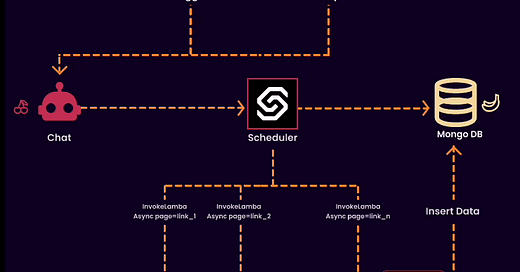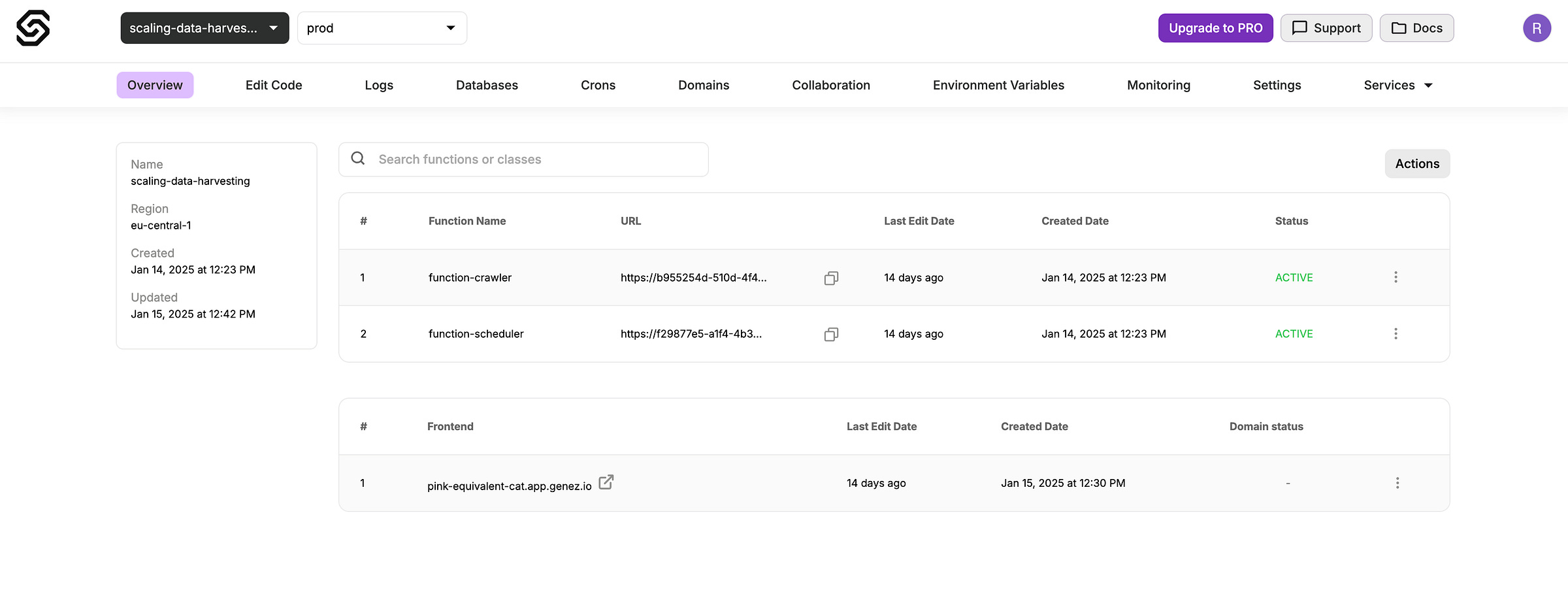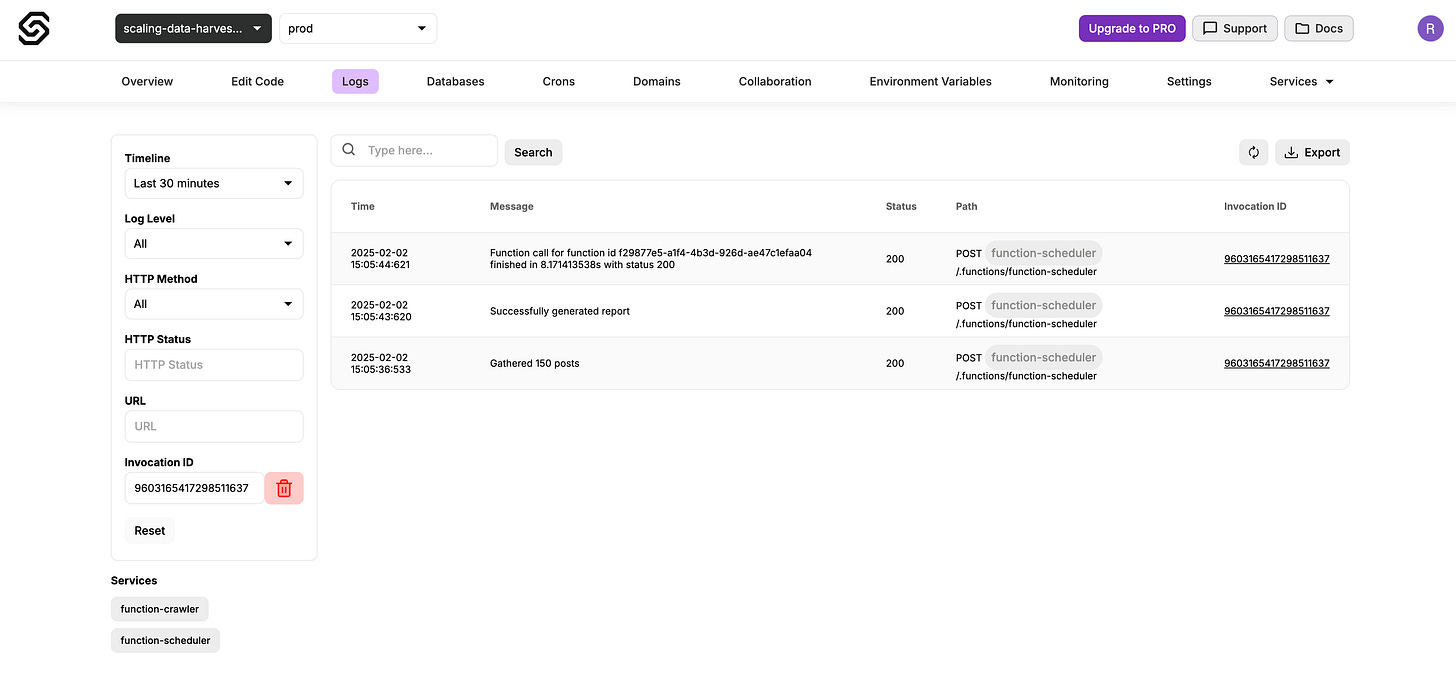Cracking the Trend Code: How I Built a Trend Analyzer with Cursor, Genezio & OpenAI
Building a fast Trend Analyzer using highly scalable crawler infrastructure in Genezio
⚠️ ᴀᴛᴛᴇɴᴛɪᴏɴ! ᴛʜɪꜱ ᴀʀᴛɪᴄʟᴇ ᴡᴀꜱ ᴡʀɪᴛᴛᴇɴ ʙʏ ᴀ ʜᴜᴍᴀɴ! ⚠️
Trends. They are everywhere, influencing people, shifting mentalities and markets. I mean, you can see it with your own eyes, few people heard about Retrieval Augmented Generation (RAG), then in a short period of time it has seized the whole internet. Now that DeepSeek made their big announcement about their new toys and Nvidia stocks have fallen, I kinda know what the internet top voice tech influencers will talk about.
These high profile tech people will often steal likes, their content will be pushed by some algorithm and gain a hell lot of impressions which turns all the attention to them. Because they are well informed, or have a friend which is working at a unicorn company leaking information, or they have more time than you researching new tech stuff & keeping up with the industry.
Well… why shouldn’t you do the same? Or are you stuck on what to talk about, what spicy subject boosts your content and steals the audience?
Then today is your lucky day! I will show you how to build your own internal tool that you can use to anticipate trends based on top voices in your area of expertise.
AI trends move at lightning speed, leaving the real engineers behind to fix the mess. Learn how to not to run after trends and architect real solutions.
Table of Contents
How trends shape the world
Automation is your friend
End-to-end business flow
Trend Analyzer
Generate an interesting UI
More than just a Cloud provider
Tired of Secret Management Stores?
Bye bye yaml files
Easy setup of Managed Services
Conclusions
1. How trends shape the word
Can you think of a time in which no trends were popular? When everybody was so painfully unique that no mass of people moved in the same way. I can’t. And I’m sure so do you.
I can argue all day that it’s human nature to want to belong, to be part of and participate in the common activities everybody does. You’d think that during these times of individuality trends would die out fast — because people want to be different, unique, not like the rest — but that’s not what’s happening at all.
People love to partake in trends so much that we now have weekly micro-trends that wash away before you understood it was trending. The internet allocates a week at most to the majority of the micro trends, the hottest news and event the saddest one. So, what is a trend?
“To be commonly considered a trend, rather than a fad or a blip, a pattern in the data must pass basic tests of significance, it must be a change that affects a wide range of people and that has, or will eventually have, broad social, economic or political implications.” — Adam Gordon, Futurist
Back to tech, we suffer from the same characteristics of a general trend, there’s no exception. Within this context, trends look like new technologies, new tools, libraries, frameworks, languages and the hottest trends are about big companies winning / losing. Whenever on of the tech CEOs open their mouths in public, you know for sure what the internet will buzz about for that week.
Let’s tie it back to your personal brand. The way you act, the way other people think of you and the way you interact online is your brand. You think you don’t have one but you do, and everybody around you has one too. And it gives you some amount of authority.
We’ll be building today a tool for you to use in your learning process. Or posting process. Or a future unknown process. Taking LinkedIn, looking at some top profiles over there on your specific niche and extracting their posts, this solution will provide you with insights and analysis to learn from and enhance your online presence.
2. Automation is your friend
2.1 End-to-end business flow
You type in a list of LinkedIn profile url’s, a function is then triggered for each url in order to extract all the posts that person has ever written then throw them into and database. Lastly, the posts are aggregated and sent for analysis to GPT which, with some smart promts, will extract the trends and display them nicely back to you.
To speed up our deployment process, we will use Genezio, a cloud platform dedicated to simplifying the deployment process by making it the one click solution from local to production. We will use their platform to power-up the implementation and present some amazing services they provide in such an abstract way that it makes an no-brainer to use them.
What do you need before deploying?
Obviously a Genezio account. I want you to see the value of this platform yourself.
OpenAI Key, since everybody now has a GPT account, this is already solved.
A RapidAPI Account and a free subscription to Fresh LinkedIn Profile Data.
2.2 Trend Analyzer
Let’s break down the main components that make this solution possible.
The Scheduler — 🔗 Code
The leading actor here is the scheduling part itself, and this is the main entry point of the system where the whole flow is started and orchestrated.
The Crawler — 🔗 Code
The worker, whose job is to take an individual profile link, extract posts from that persons page, clean the raw text then store all the posts in the database.
2.3 Generate an interesting UI
Last but not least, the frontend. Genezio has lots of templates for full stack projects, which this one is too. The cool part about this setup with Genezio is that you can directly call functions from the front to back, no rest API required—deep dive here.
We have a pretty simple application that requires an input, a button and displaying long text near those elements. The challenge though? Make it pretty. I am a creative person and I like to think that I’ve got a sense of design, but there’s only so much you can do with 3 elements and make it fairly easy to replicate. So I turned to AI, maybe it has seen simple UIs before and can generate something more interesting for me.
Cursor: AI-Powered Coding for Faster Development
All the buzz around it made me curious, I had to try it out and I got the perfect challenge to test its creativity. Cursor is an AI-powered code editor that integrates AI-assisted development directly into the workflow.
It provides AI-generated suggestions and layout ideas, so I wanted to see if it could come up with something better than my initial ideas.
For those who are familiar or have used VSCode, the transition is incredibly seamless. It took me less than 30s to have my whole setup migrated to Cursor, all my extensions and custom settings. The interface remains exactly the same as VSCode, so I was already familiar with everything. The only issue I has was remembering to now click on the Cursor icon in the toolbar.
Can you spot the difference?
One of the less talked about aspects of Cursor is its ability to generate UI layouts and code snippets that work with current best practices. I wanted to see if it could improve my initial ideas—or generate better—for a relatively simple and minimalist design.
The result? A surprisingly well-structured and clean implementation, with modularity of reusable components and code that is maintainable.
v1 of the prompt
It outputted something decent enough. It’s not the UI revolution or anything of the sort, but it implemented my need with some color too!
At least it’s pretty clear that creativity is still intact in code generating tools. The code was clean, used best practices and really well separated, so I had no issues when changing it with a UI mimicking the Genezio website.
All in all it’s a useful tool for fast prototyping and generating bulks of code as a starting points. I wouldn’t outsource my creative process to it nor expect it to innovate with the UI it generates.
“Ok , ok, show me how to setup this on my local and start my influencer conquest!” — you, probably
After cloning this Github repository, create a .env file by following the .env.example in the backend folder. Then run this command:
> make localYou’ll have to wait a few seconds for the local deployment process to finish, then head over to http://localhost:3000 for the user friendly UI. Paste some LinkedIn profile urls, hit the Generate Analysis button and voilà:
While finishing up this solution, I’ve explored enough of Genezio that I’m comfortable and very eager to talk about them some more. Here’s what they provide that really makes them shine and what made me consider them to be…
3. More than just a Cloud provider
In this section I will highlight some cool features that these people have dedicated time to implement, some of them which I haven’t seen in any other provider out there. The company has 1 year on the market and they’ve done already so much.
To be frank, at first, I was a bit skeptical about their solution, but once I’ve used it and continued to play with it, I started to see the value they provide, and it hit me so much that I’ve already upgraded my subscription.
These services made me realize that they are slowly becoming a true robust ecosystem. In other cloud platforms it would take more time to setup and connect these services together. I found it easy-enough, I’ve already learned how these services work and how to set them up through reusable templates. It might be difficult for others though, especially those who have never studied cloud concepts or configured these from scratch, or maybe they just don’t want to or don’t have the time to dedicate in learning.
This platform has made this process easier than ever before, and I mean it. It’s an absolute no-brainer when it comes to launching databases — it’s one click away! — and to configuring logs and secrets. That’s enough of me, I’ll let you convince yourself with some pretty strong arguments
Tired of Secret Management Stores?
This one really got my eyes locked in. I dread how much time it takes to setup environment variables, the hardest part being that I have to manually configure them each time in a service like Secret Manager or Parameter Store. Usually, I automate this through IaC , creating each variable with an empty placeholder then I create ansible scripts to update each through one commit. But these guys have made it an easier than ever:
genezio deploy --env ./backend/.envJust by specifying an .env file they parse it and automatically populate the variables in the deployment of the function. Just amazing!
Bye bye yaml files
Linking your github will automatically trigger deployment every time you commit something new to your repository. No extra setup required on your side for this.
Another area where you won’t need to struggle with knowing how to configure GitHub actions, GitLab pipelines or even Jenkins cluster.
Also errors what might raise when trying to see if these pipelines work by doing “hundreds” of commit changes to make it work.
Easy setup of Managed Services
If you ever thought clicking and selecting settings in a console was the easy way to setup your databases, Genezio makes it even simpler. Hitting 2 buttons gets the job done, or you can define it in the yaml file and deploy the whole infrastructure at once.
The main disadvantage here is that your database would be publicly exposed, but since we won’t be using this for an production setup we are safe.
While playing with their database, I’ve noticed that they even provide an dashboard for interacting with the database.
Enhanced Monitoring
This is nothing new, each lambda has its own logging stream, I just love how they’ve packaged and presented this. At first, you will see all your logs scattered around, but once you click for an invocation you will see only the logs for that function.
The thing that makes their log service special it that I don’t have to worry about creating and configuring any infrastructure anymore. I can fairly compare this with CloudWatch and I think about, policies and roles, and loggroups just to enable some containers to spit their logs in it.
4. Conclusions
Let’s recap: automation, AI, and cloud infrastructure go hand in hand when creating day to day products. The solution integrated Genezio, a cloud platform with AI-driven tools like Cursor in order to automate anticipating and analyzing trends, which turned out to be a scalable & efficient solution.
Some Key Takeaways:
Effortless deployment with Genezio: Genezio makes things simple for developers with the one-click deployment, effectively reducing (or eliminating) the complexity of the cloud.
Fast development with Cursor: Cursor enhanced the pretty part of the tool, as well as the development process. It’s code suggestions, frontend generation and clean UI speed up development tremendously. Sure, it’s not a replacement for creativity, but the speed is there!
Designed for rapid prototyping: Whatever tool you’re building, being this use case of a trend analyzer or something bigger, be sure that Genezio got your back with pre-build templates and seamless integrations.
Integrated and scalable infrastructure: With built-in secret management, automated deployments, and managed services, Genezio really drives the point home that backend is well taken care of and production will not be so far off.
👇👇👇
Ready to get started?
Explore the 🔗 scaling-data-harvesting repository to access code samples, configuration files, and step-by-step guides to help you hit the ground running.Discover how Genezio’s features can transform your development workflow and simplify your deployments.















